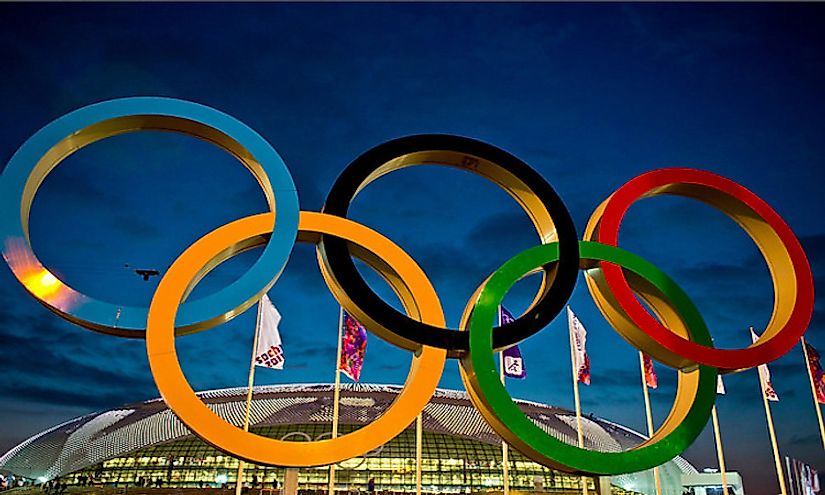What Do The Olympic Rings Represent?

The Olympic Games
The Olympic Games are divided between summer and winter events and take place every four years. The seasons alternate so that an event is held once every two years. Athletes from more than 200 countries come together to compete in the world’s most important sporting competition. Since its inception, other Olympic Games have been created, including the Youth Olympics and the Paralympics. Certain symbols are used to convey the meaning and identity of the Olympics. These symbols are the: rings, flame, and motto. This article inspects what the Olympic rings stand for.
The Olympic Rings
One of the most widely recognized symbols of the Olympic games are the five rings. Five rings were chosen to symbolize the Olympics because its sports competitors come from 5 continents. These rings are displayed in an overlapping fashion to represent the international cooperation behind the games as well as the coming together of athletes from all over the world. Originally, the rings were overlapped in a row. Today, all five rings are overlapping with three located on the top row and two on the bottom row.
Colors Of The Rings
The colors of the rings are green, black, yellow, red, and blue set against the white background of the flag. At the time they were chosen, these were the colors found on each of the flags of the participating countries. This was done to include all of the nations and to create an international symbol that left no member unrepresented.
History Of The Rings
Although the modern form of the Olympic Games began in 1896, it was only in 1912 that participants came from the five inhabited continents. In 1913, Pierre de Coubertin became the first person to use the rings when he drew them at the top of a letter. The rings were first publicly presented as a symbol for the Olympics in 1914 at the Olympic Congress in Paris. They were displayed on a white flag. Because of World War I, the Olympics Games was canceled until 1920, which is when the first Olympic flag was officially displayed. This flag further strengthened the aim of the Olympics - world unity.
Traditionally, the flag bearing the Olympic rings was only raised in the stadium as part of the opening and closing ceremonies. The 1960 games were held in Italy and became the first time when the Olympic flag was carried into the stadium as part of the ceremonies. Since 1971, this act has been done by a participating athlete. Today, the mayor of the host city hands over the flag to the mayor of the next host city at the end of the Olympic Games.
The rings are not only represented on the flag. They have also been found on the medals presented to winning athletes. The first time they were used was in 1924, although the following summer Olympic Games used a different design. The rings were not used on the summer medals again until 1956 for the Equestrian Games of Stockholm, Sweden. The Summer Olympics began utilizing the rings again during the 1976 Montreal Games, and they have appeared on the medals since then. The Winter Olympics medals, however, have showcased the rings since 1928.
Additionally, the Olympic rings can be found on souvenirs, collectible stamps, and official posters.
Regulated Use Of The Olympic Rings
Today, this symbol belongs to the International Olympic Committee and cannot be used without their express permission. Its appearance has been officially regulated, including the ring positioning and color tone. Host countries typically design an Olympic emblem to represent the games in their countries. This emblem must be submitted to and approved by the International Olympic Committee. The emblem of Australia, for example, displays the rings and the country’s coat of arms, a shield with a kangaroo and emu on either side.











